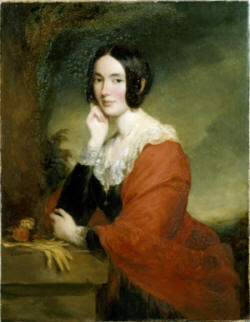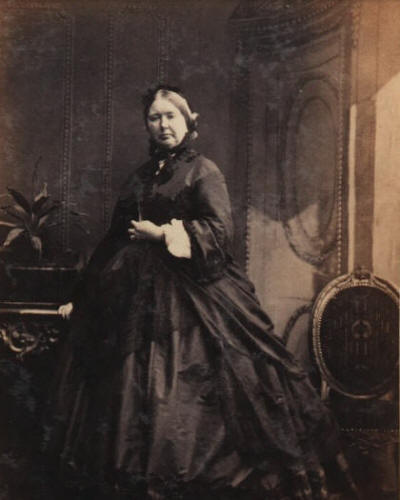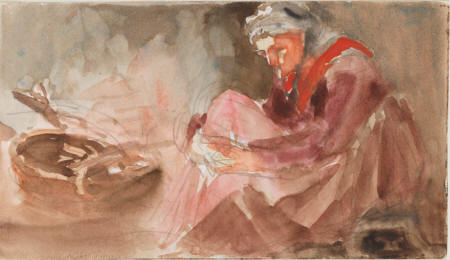Queer Places:
Castle Ashby, Northampton, Castle Ashby, Northampton NN7 1LQ, UK
Alford House, 49 Princes Gate, Knightsbridge, London SW7 2PG, UK
Belton House, High Rd, Belton, Grantham NG32 2LW, UK
Ashridge House, Moneybury Hill, Ringshall, Berkhamsted HP4 1LX, UK
St. Peter and St. Paul's Churchyard
Belton, South Kesteven District, Lincolnshire, England
Memorial cross and drinking fountain, Ringshall Dr & Nettleden Rd, Little Gaddesden, Berkhamsted HP4 1NU, UK
 Marianne Margaret Egerton, Viscountess Alford, generally known as Lady Marian Alford,[1] (June
21, 1817 - February 9, 1888), was an English artist, art patron, and author. She was known for her work with the Royal School of Art Needlework, and for writing a history of needlework.
Medusa, Harriet Hosmer's first
commissioned sculpture, was bought by Mrs. Samuel Appleton, wife of the
prosperous Boston merchant and philanthropist, who later owned its pendant,
Daphne. In the early 1860s, the Duchess of St. Albans, Lady Sibyl Mary Grey,
and Lady Marian Alford, art patron, amateur painter, and intimate of Hosmer,
purchased busts of Medusa.
Marianne Margaret Egerton, Viscountess Alford, generally known as Lady Marian Alford,[1] (June
21, 1817 - February 9, 1888), was an English artist, art patron, and author. She was known for her work with the Royal School of Art Needlework, and for writing a history of needlework.
Medusa, Harriet Hosmer's first
commissioned sculpture, was bought by Mrs. Samuel Appleton, wife of the
prosperous Boston merchant and philanthropist, who later owned its pendant,
Daphne. In the early 1860s, the Duchess of St. Albans, Lady Sibyl Mary Grey,
and Lady Marian Alford, art patron, amateur painter, and intimate of Hosmer,
purchased busts of Medusa.
Lady Marian Alford became connected to Belton House through her marriage to Viscount Alford, the eldest son of the first Earl Brownlow and brother of Sophia Cust. Her husband was due to inherit the Earldom and the Brownlow estates but, when he died in 1851, he left Marian a young widow and mother of two small boys.
Marian spent much of her life in London and at the family estate of Ashridge,
but Belton House has much of her work, and some of it is on display.
Alford was the elder daughter of Spencer Compton, 2nd Marquis of Northampton, by his wife Margaret, eldest daughter of Major-General Douglas Maclean-Clephane, and was born in 1817 in Naples, Italy where her father was then living. Her siblings are: Lady Margaret Leveson-Gower; Charles Compton, 3rd Marquess of Northampton; William Compton, 4th Marquess of Northampton; Spencer Scott Compton
and Revd. Lord Alwyne Compton, Bishop of Ely. Her childhood was spent in Italy and she derived a love of that country which lasted throughout her life. She came to England in 1830 with her parents, but in later life returned to spend many winters in Rome. On 10 February she was married at Castle Ashby to John Hume Cust, Viscount Alford, elder son of John Cust, 1st Earl Brownlow, and the heir to a portion of the large estates of Francis Egerton, third and last Duke of Bridgewater. In 1849, this property passed to Lord Alford, but he died in 1851, leaving his widow with two sons. After a legal contest (known as the Bridgewater Will Case) which followed Lord Alford's death, his elder son's claim to succeed to the Bridgewater estates was granted by the House of Lords on 19 August 1853.

Marianne Margaret Egerton (née Compton), Viscountess Alford ('Lady Marian Alford')
by Camille Silvy
albumen print, 24 September 1862
3 1/4 in. x 2 1/8 in. (83 mm x 55 mm) image size
Purchased, 1904
Photographs Collection
NPG Ax61468

Marianne Margaret Egerton (née Compton), Viscountess Alford ('Lady Marian Alford')
by Louisa Anne Beresford
watercolour and pencil, 30 August 1887
3 3/8 in. x 5 7/8 in. (87 mm x 150 mm)
Given by Anne Horatia (née Richmond), Lady Piper, 1994
Reference Collection
NPG D23146(10)
Lady Marian Alford was an accomplished artist, inheriting her tastes from both her parents. She did not receive any regular education in art, but her drawings and paintings attained a high standard. Her house in London, Alford House, Prince's Gate, South Kensington, was built for her by Sir Matthew Digby Wyatt, mainly from her own designs.[2] She was also a liberal and intelligent patron of artists in England and Italy, and a friend of the leading artists of the day. She was especially interested in needlework, both as a fine art and as an employment for women, and it was greatly through her influence and personal efforts that the Royal School of Art Needlework in Kensington took its rise. For many years she collected materials for a history of needlework, which she published in 1886 under the title of Needlework as Art. Marian Alford was also the editor of The Handbook of Embroidery (written by Letitia Higgins; 1880), and the author of a booklet called The Handbook of Art Needlework for the Royal School, South Kensington (1880).
She also helped in promoting the high-quality Madeira embroidery in Britain, which was developed by Bella Phelps on the island of Madeira.
Lady Marian Alford was noted for refinement and dignity and for her conversation skills.
She died at her son's house, Ashridge House, Berkhamsted, on 8 February 1888, and was buried at Belton near Grantham, Lincolnshire.
Of her two sons the elder, John William Spencer Brownlow Egerton-Cust, succeeded his grandfather as second Earl Brownlow, and, dying unmarried in 1867, was succeeded by his younger brother, Adelbert Wellington Brownlow Cust, third Earl Brownlow.
A memorial cross and drinking fountain erected in 1891 in Alford's memory is situated in the Hertfordshire village of Little Gaddesden. It is listed Grade II on the National Heritage List for England.[3] A tall tapering Iona cross on a high square base of 2 steps with a small scallop drinking fountain at rear and large semi-circular drinking trough and recessed dog trough at front of base. Front and rear faces of cross have carved panels of interlace ornament and Pictish figures. Inscription on larger trough 'Whosoever drinketh of the water that I shall give him shall never thirst: but the water that I shall give him shall be in him a well of water springing up into Everlasting Life'. Large semi-circular continuous moulded stone seat behind cross on S with step, back and bench ends.
My published books:


BACK TO HOME PAGE

 Marianne Margaret Egerton, Viscountess Alford, generally known as Lady Marian Alford,[1] (June
21, 1817 - February 9, 1888), was an English artist, art patron, and author. She was known for her work with the Royal School of Art Needlework, and for writing a history of needlework.
Medusa, Harriet Hosmer's first
commissioned sculpture, was bought by Mrs. Samuel Appleton, wife of the
prosperous Boston merchant and philanthropist, who later owned its pendant,
Daphne. In the early 1860s, the Duchess of St. Albans, Lady Sibyl Mary Grey,
and Lady Marian Alford, art patron, amateur painter, and intimate of Hosmer,
purchased busts of Medusa.
Marianne Margaret Egerton, Viscountess Alford, generally known as Lady Marian Alford,[1] (June
21, 1817 - February 9, 1888), was an English artist, art patron, and author. She was known for her work with the Royal School of Art Needlework, and for writing a history of needlework.
Medusa, Harriet Hosmer's first
commissioned sculpture, was bought by Mrs. Samuel Appleton, wife of the
prosperous Boston merchant and philanthropist, who later owned its pendant,
Daphne. In the early 1860s, the Duchess of St. Albans, Lady Sibyl Mary Grey,
and Lady Marian Alford, art patron, amateur painter, and intimate of Hosmer,
purchased busts of Medusa.



